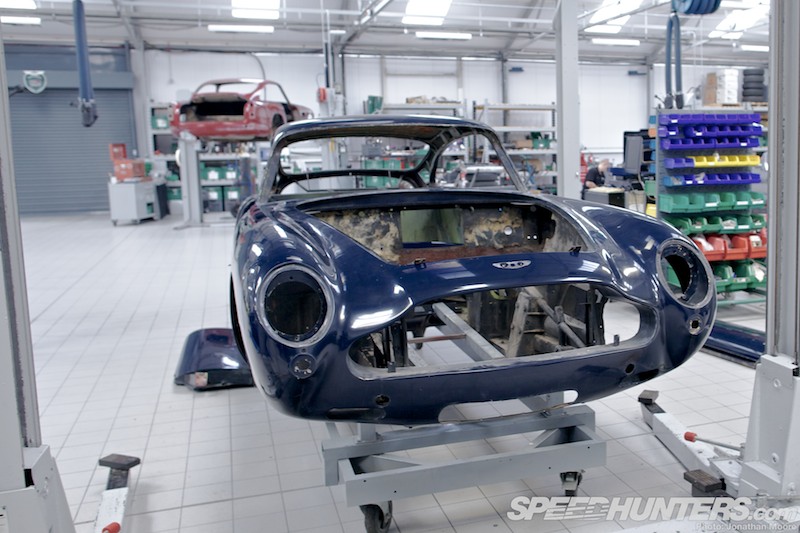
There was a tradition in the old days of what sir wanted being what sir would get. Where the discerning gentleman or woman could expect a certain level of service. A certain quality. Although modern car companies still sell bespoke cars – Aston Martin being a prime example – there’s something about the old cars themselves that made for a different relationship. So whilst at the main Aston Martin production facility up the road in Gaydon the very latest models roll off the line, down at the original Aston Martin Lagonda Works at Newport Pagnell, their associates in the Heritage team busy themselves not with just what’s current, but also the gamut of fully one hundred years of output from the company.
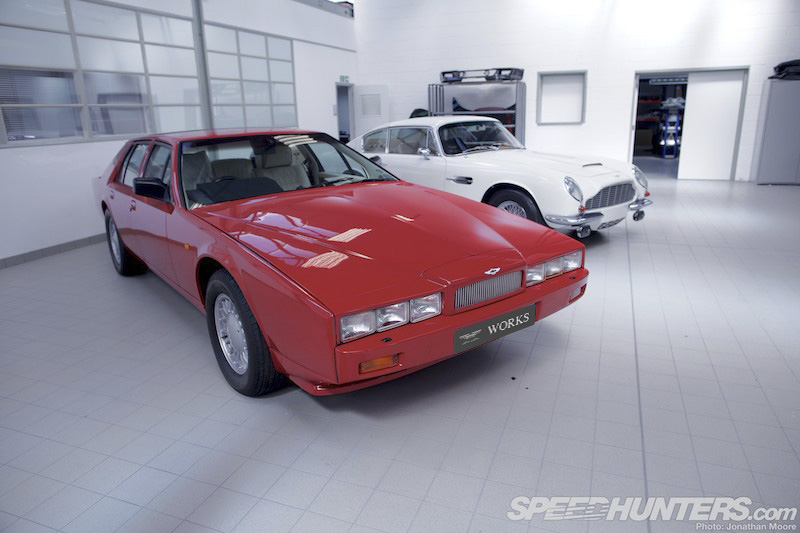
Welcome to the secret service world of Works, the place that cares for these gentleman ruffians of cars. From cradle, through life to apparent retirement, only to be reborn anew.

What is Works? It’s everything Aston Martin. You can buy a secondhand car of any vintage, stretching back from the contemporary range…

… back through the generations, rewinding through the years…
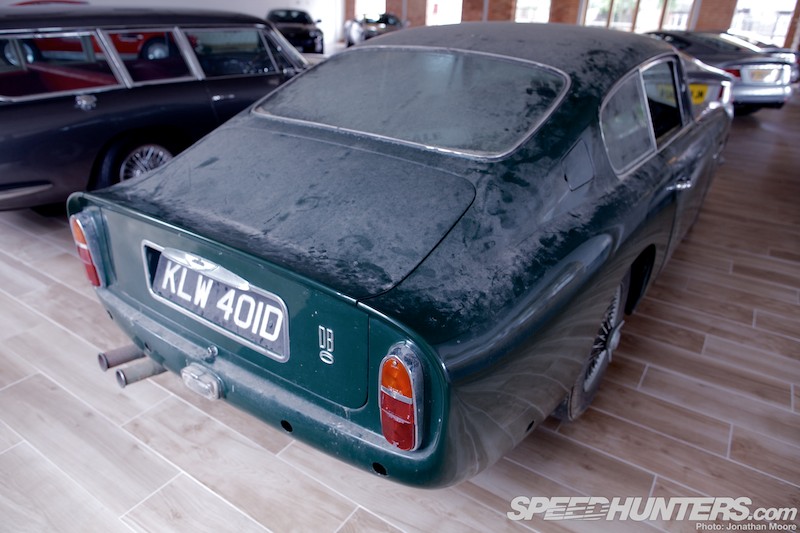
… whether currently pristine or awaiting a benevolent donor to fund restoration.
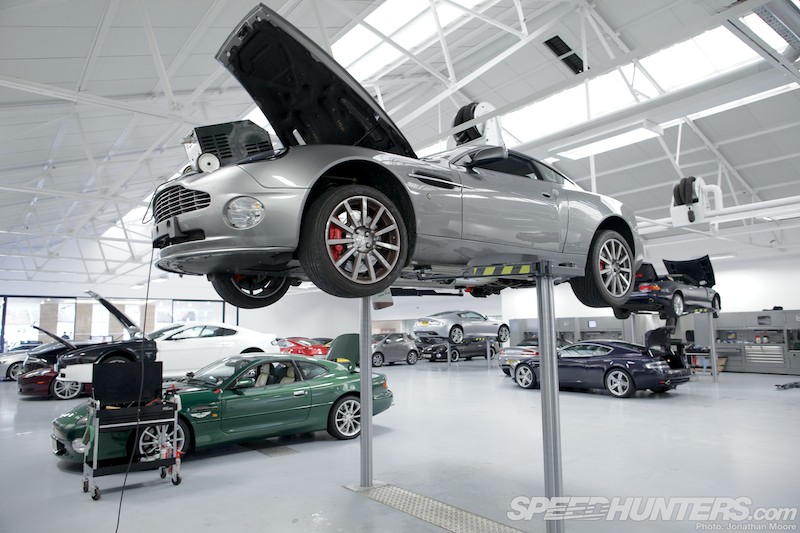
It’s also a place where you bring your car in for a service or upgrade, and is capable of dealing with a similarly wide range of cars. A part of the original AML factory has recently completed its transformation from drafty century-old building to cutting edge servicing facility dedicated to the output of the last two decades…
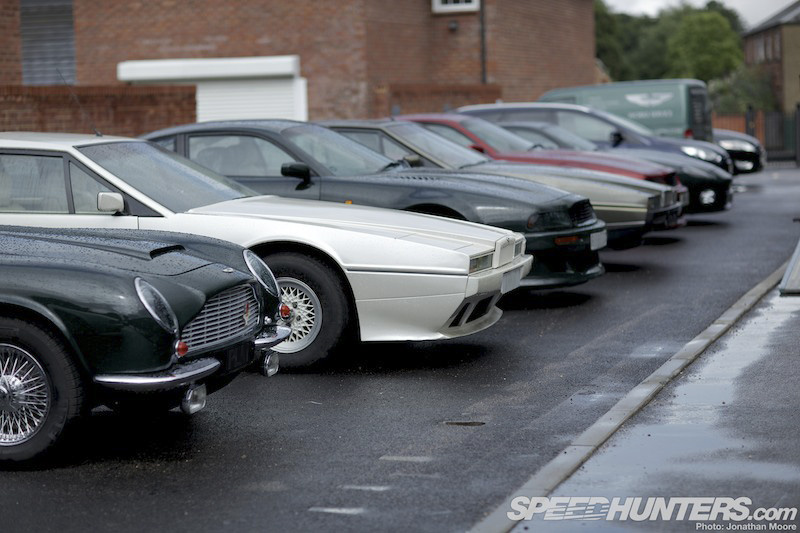
… whilst an adjoining building cares for the older models. That’s 80 years of cars and technologies that the skilled team need to deal with.
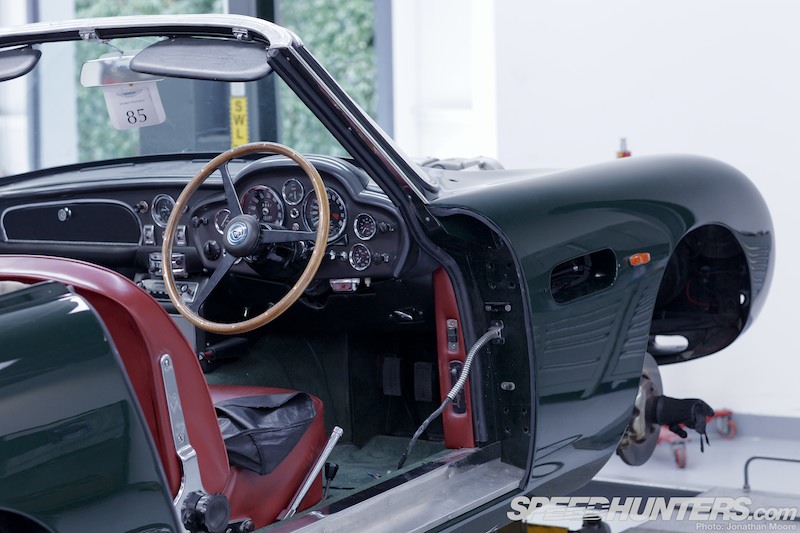
If you wanted to describe it in base terms, yes, it’s a secondhand car dealership and servicing garage. But when you take on board the range of what the 98 staff deal with, you quickly realise that this is an incredible operation: part artisan’s atelier, part museum, part gallery, part factory… all Aston Martin. However, there’s no aloofness about on the part of those who work there, just enormous pride. There’s a basic emotion at work: a desire to put the customer and his Aston Martin first. At Works, sir really can get what he wants.
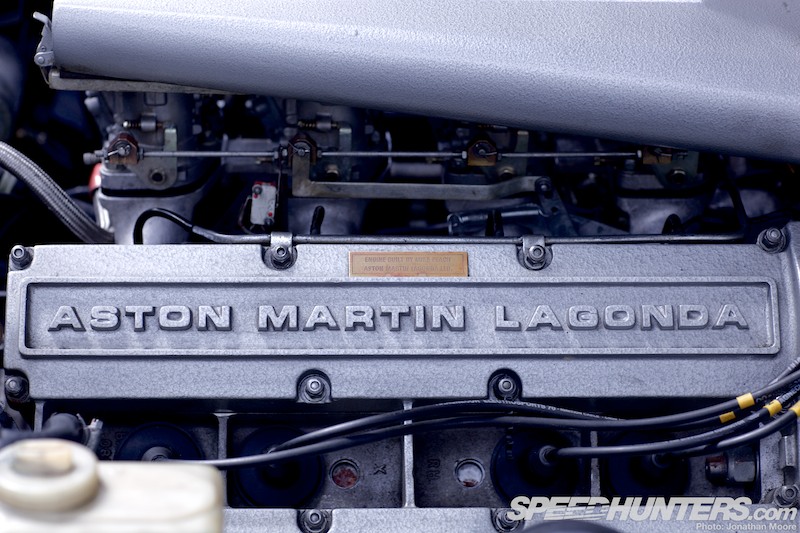
But then there’s a link between the cars and the people who work here. Across the various teams are people with not just a couple of years of service but 20, 30 and more. For instance, whilst this V8 was being tended to in the Heritage Workshop…

… Mike Peach, the man responsible for building the engine in the first place and who’s name was on the badge affixed to the engine (and 400 others), could be found in the modern workshop, overseeing quality control after 32 years with Aston Martin. This is a typical story: people often have long histories with the company, often returning again after working elsewhere.
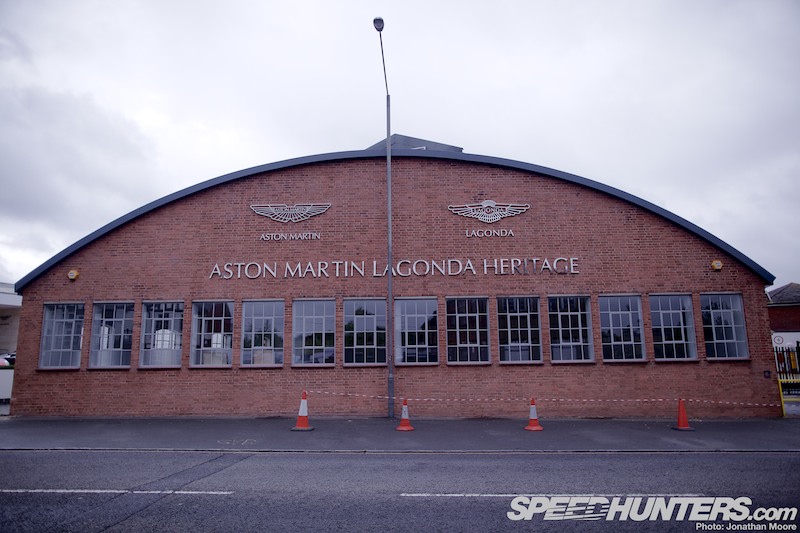
The location holds a special place for Aston Martin. It’s a historic location in its own right, having been associated with transport manufacturing since 1830. The Salmon’s Motor Carriage Works of the 1890s changed its name to Tickford in 1943 – David Brown bought the company in 1954 and soon moved Aston Martin and Lagonda’s manufacturing there.
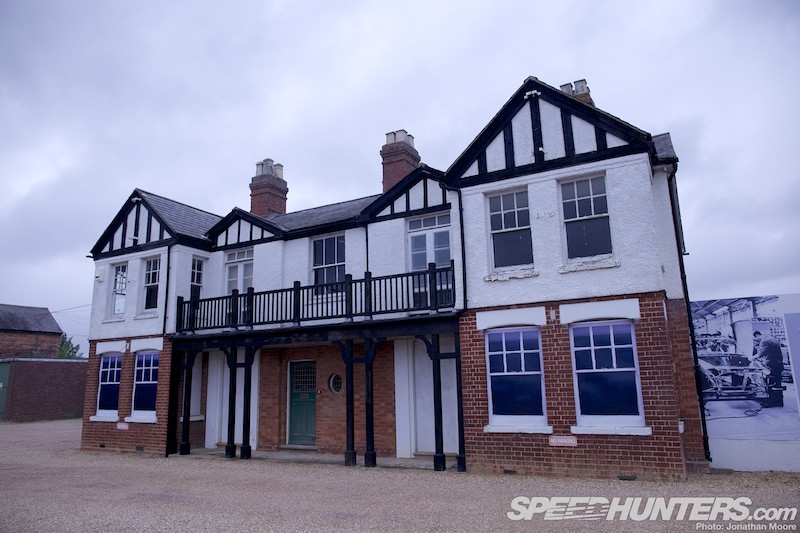
The factory buildings where the final V12 Vanquish was constructed in 2007 have been demolished, but in front of the site, as incongruous now as it ever was, is Sunnyside, the two-storey villa which was David Brown’s office and the headquarters of Aston Martin right up until 2003.

The modern glass and steel sales building was previously a timber yard where David Brown used to land his helicopter, but details have been kept where possible, like this facsimile of the original on-site filling station.
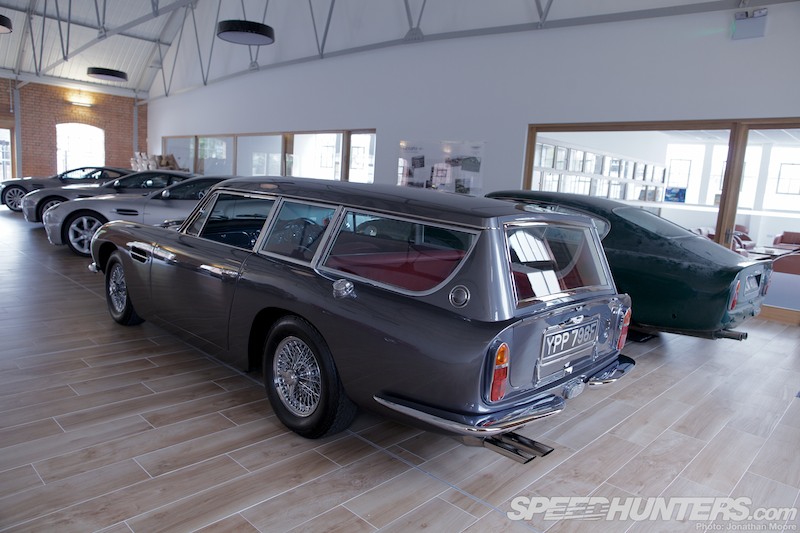
Restored cars for sale are displayed in ‘Olympia’ – one of the main original factory buildings as old as Aston Martin themselves. Most recently in the Works’ panel shop, the ringing of beaten metal has now been replaced by the gentle hum of air conditioning. Inside was a line-up of V12 Vanquishes and a trio of classics that included a recently completed restoration of a Shooting Brake (which belonged to F1 driver Innes Ireland) and an awaiting-restoration DB6.
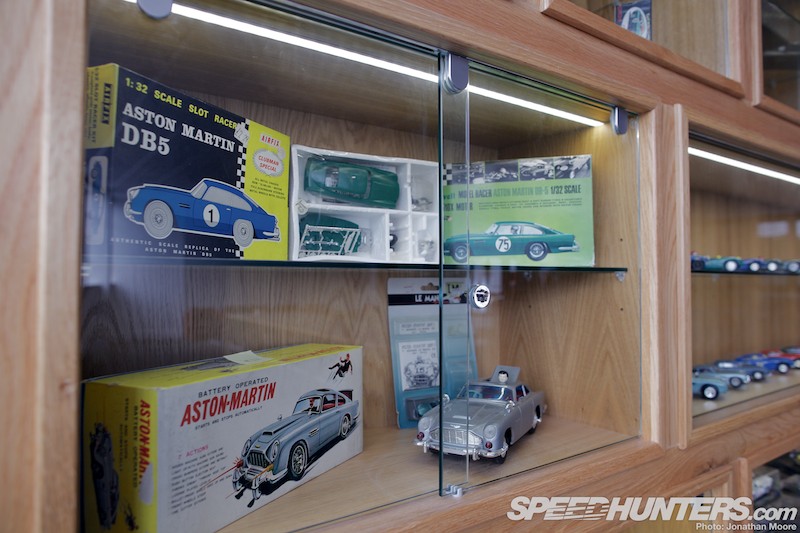
Whilst you’re deliberating about which car to be tempted by, there are two room-long cabinets of memorabilia to remind you of the brand’s history. Models, toys, ties, badges, brochures – even beer glasses.
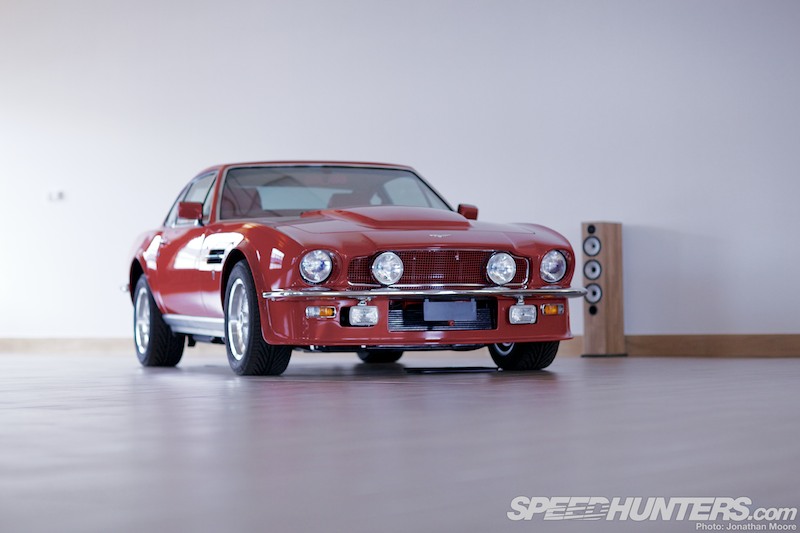
Restoration is a major part of the Works business, and this stunning V8 was another car to have just emerged from the delicate hands of the Heritage team. It’s a prime example of a classic with a modern twist. Work is always undertaken at a fixed price, so there are no surprises for the owner, and could take anything from 12-24 months depending on the work involved.
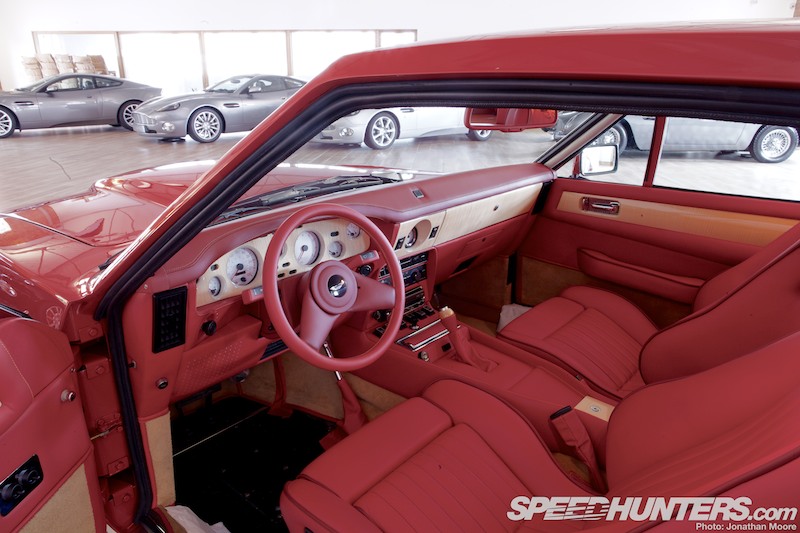
The restorations are sympathetic but use sensibly modern touches: all chassis are powder coated and sealed, water-based paints are used rather than the cellulose of old, modern oils and wiring installed, and enhancements made to the water and oil passages in engines to combat overheating. And then there are the interiors… The work is simply stunning: a combination of traditional techniques and aesthetic with modern materials and methods where applicable. All so sitting in a traffic jam won’t be the instant breakdown both mechanically and mentally that it would have been in period.
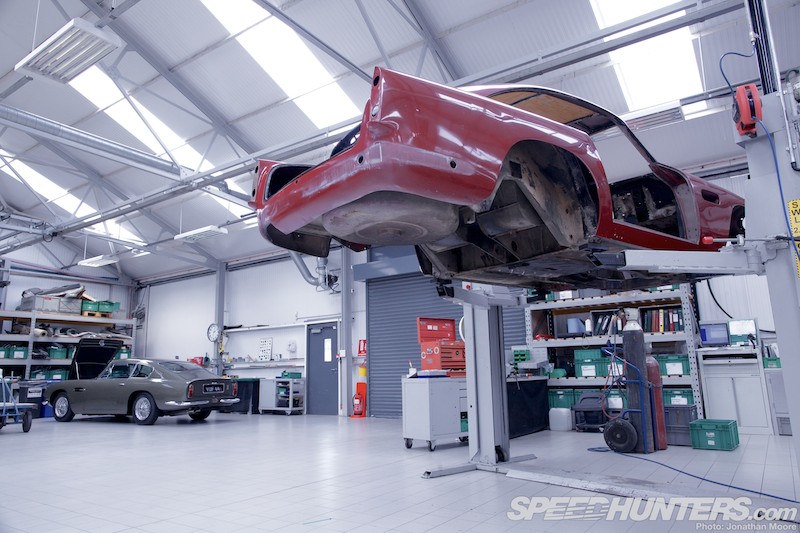
The main work is undertaken in the Heritage Workshop. Like the other historic buildings – and the cars within – it’s been restored with an eye on the past, keeping the feel of the original building whilst putting in modern amenities. The first job for any incoming car (which could be from a customer or a car that Aston Martin themselves have sourced) is a full assessment. The cars are stripped, with each part photographed and documented before being checked. Replacement is a last option, with repair or restoration always preferred.

The chassis are separated from the bodies and sent to an external contractor to be stripped and recoated: it’s the one part of the process that Works will never skip, no matter the other work involved.
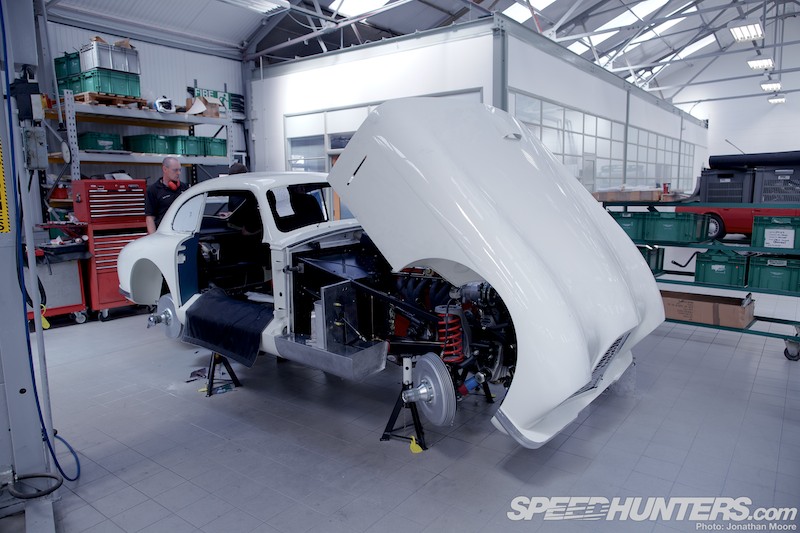
The priority for the team at this time was a DB2 that was being prepared for the upcoming Goodwood Revival – a customer car, from a bare metal project. The chassis and body had been matched together, and you could see the modern ancillaries that had been added: air conditioning (the owner lives in the Far East), multiplug wiring, new suspension and shocks – although drum brakes were retained at the owner’s request.
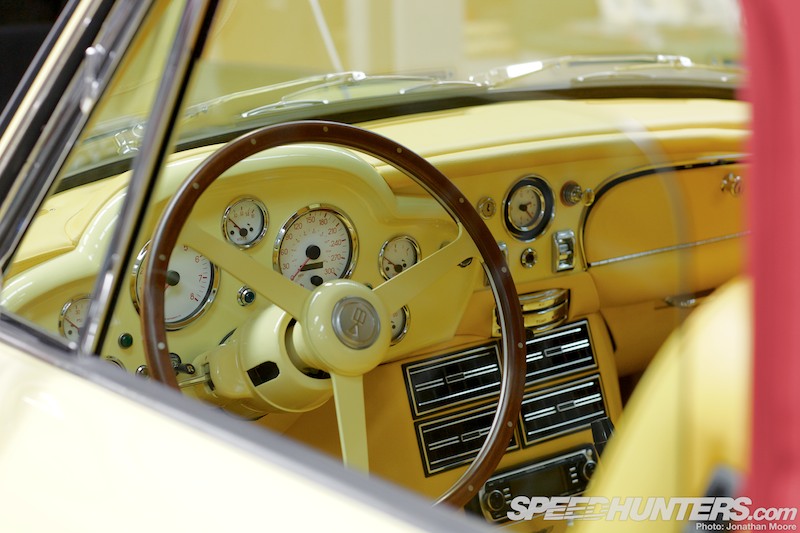
A custard yellow Volante was on final inspection before going back to its owner . Although the colour of the car required a certain kind of taste, it did allow you to appreciate the beautiful detail of the interior. For a completely authentic dashboard look, an option is to retain the original radio fascia but replace everything behind it with modern internals.
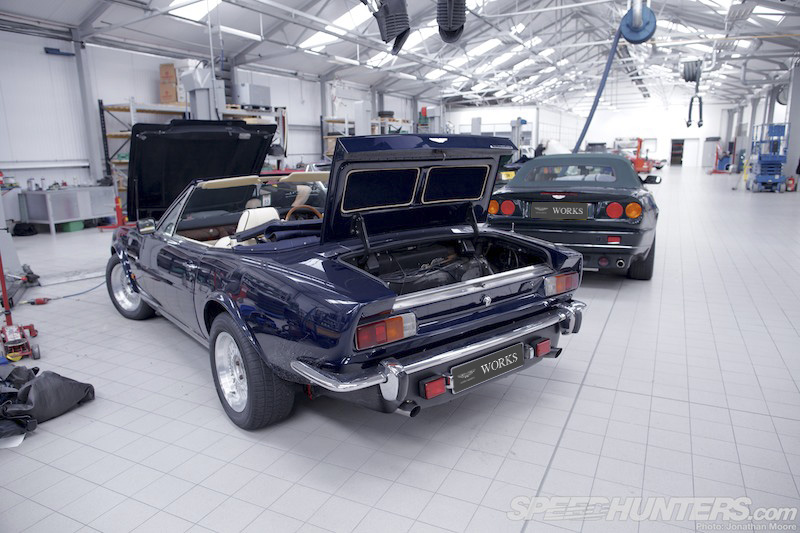
With prices of DBs out of the reach of most collectors, V8s and particularly Virages are getting increasingly popular. But if Aston Martins had always been about performance with looks, these cars took the former to a brutal level. These are 600hp leviathans: barely tamed with Works’ upgrades kits that hugely improve handling and cornering but don’t remove the need for some bravery when behind the wheel… A popular option is to replace fuel injection with carburettors for better power delivery.

The majority of engine work is completed on site, with blocks only going off site for specialist tasks like skimming or dyno work. Like the car, the engine is stripped down to its components and assessed.
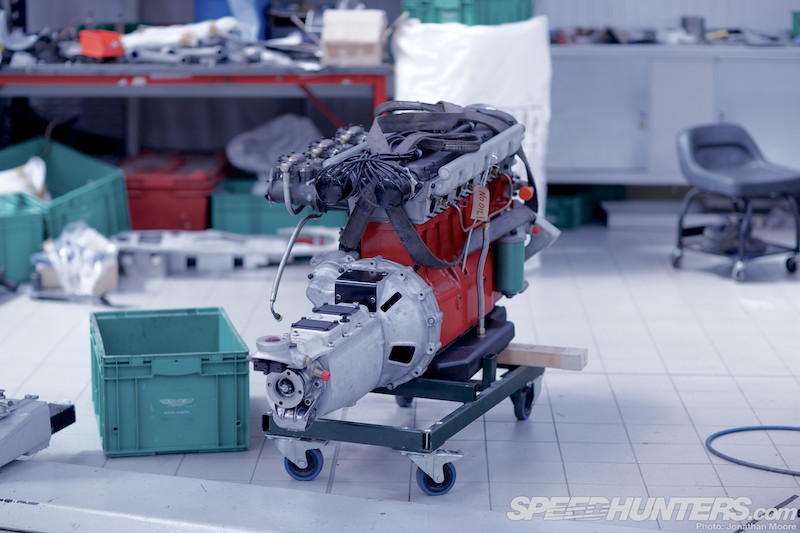
This straight six was from another restoration in progress – of a hugely valuable DB3S racer.
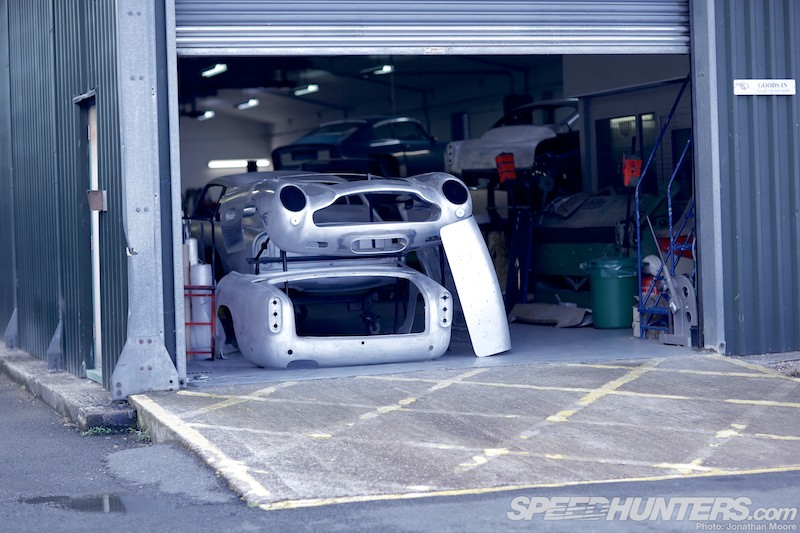
To feed all this there are several supporting teams. Firstly, there’s the panel shop, which was possibly the most awe-inspiring place I have ever visited.

I simply do not understand how a flat sheet of metal can possibly be made – by hand and with a mix of simple wheels, cutters and rollers – into a part like this. The curves seem too complex, too perfect…
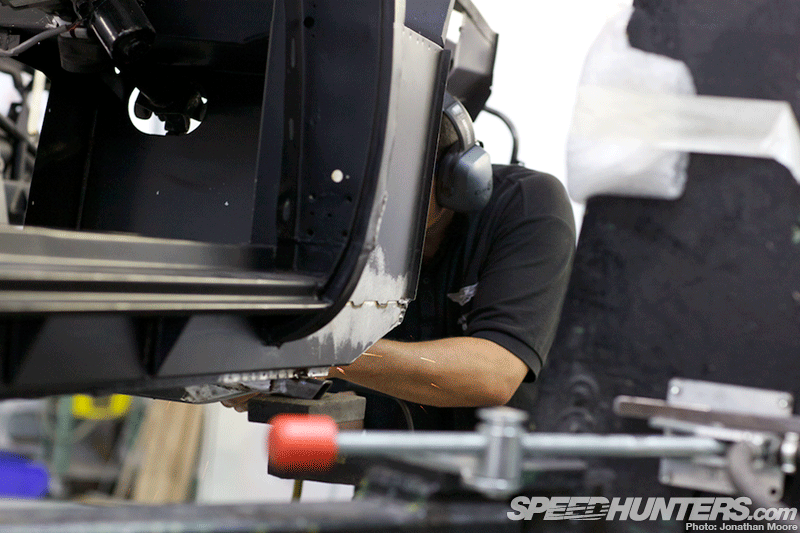
But like everything else at Works it’s down to the people who work there. I’ll be revisiting Works in the future to go through the massive skill involved in hand-crafting metal panels.
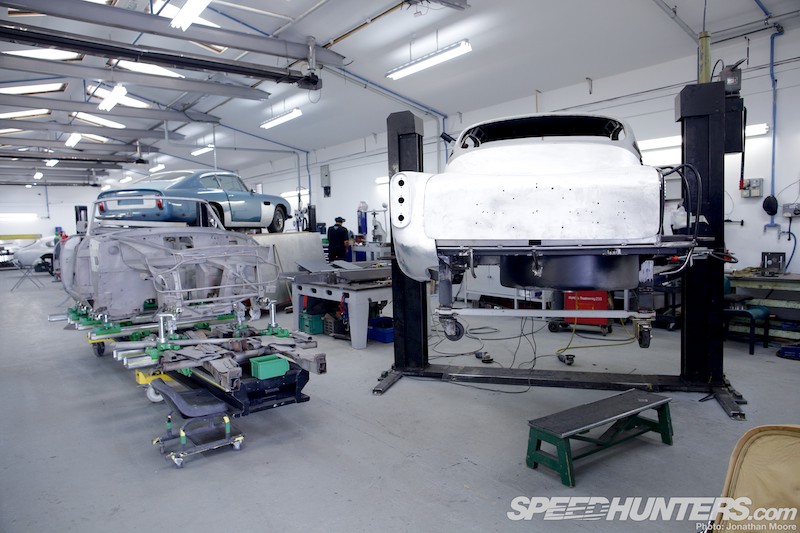
It’s the home of metal magicians. Numerous DBs were in various states of repair, showing an almost grave-to-cradle scene of how much work is involved.
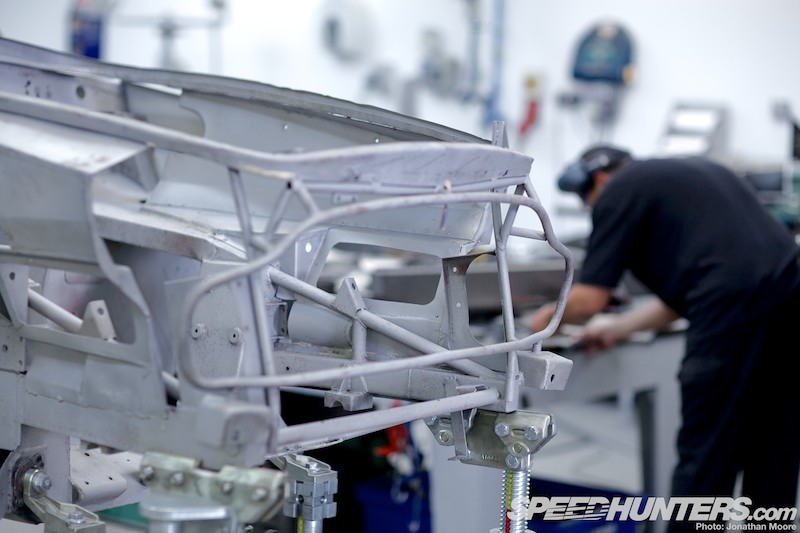
It also gave the opportunity to see the tubing behind the Superleggara name on the bonnets of many classic Astons.
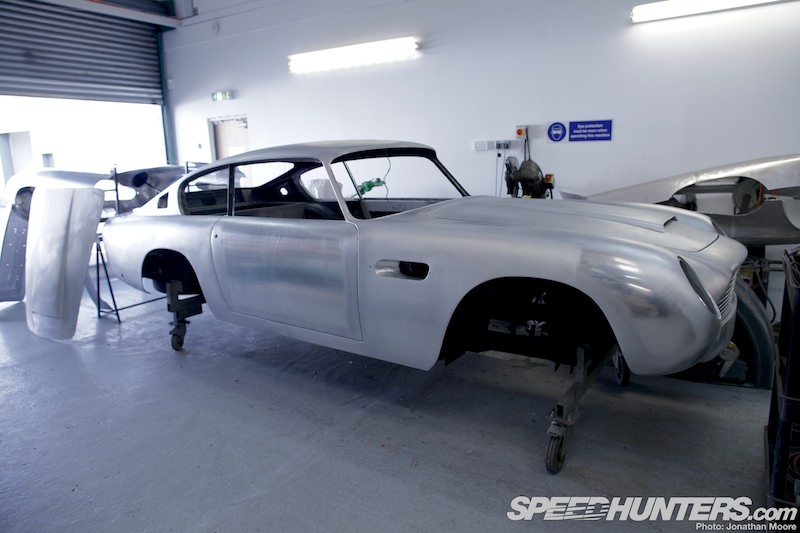
The attention to detail is beyond impressive, as is the time required to make a single panel. There can be 15 or more sections per car, all seamlessly joined into panels and tested against the chassis before being fitted: with every part of the original car hand built, every DB is truly unique and has its own quirks.

Sometimes the repairs are about simple things like crash damage, as happened to this unfortunate V8. The section to be removed had been marked out…
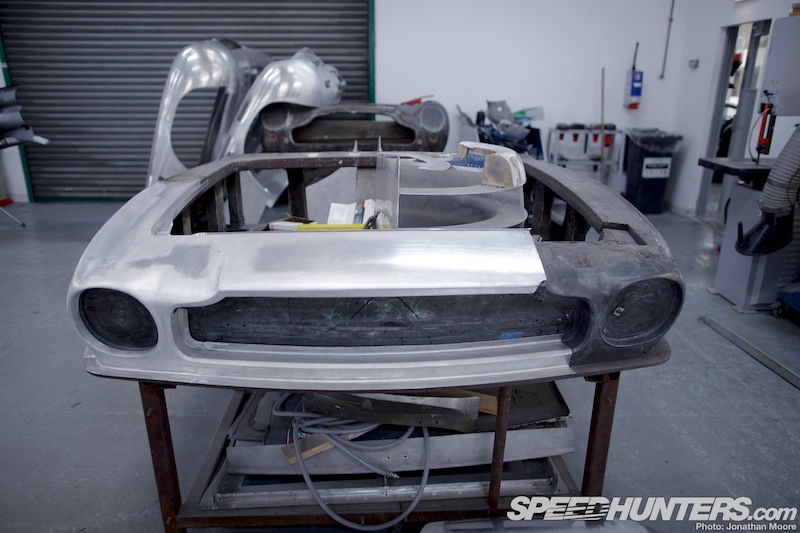
… and in the panel shop the pure metal replacement was almost ready to be carried through and let in.
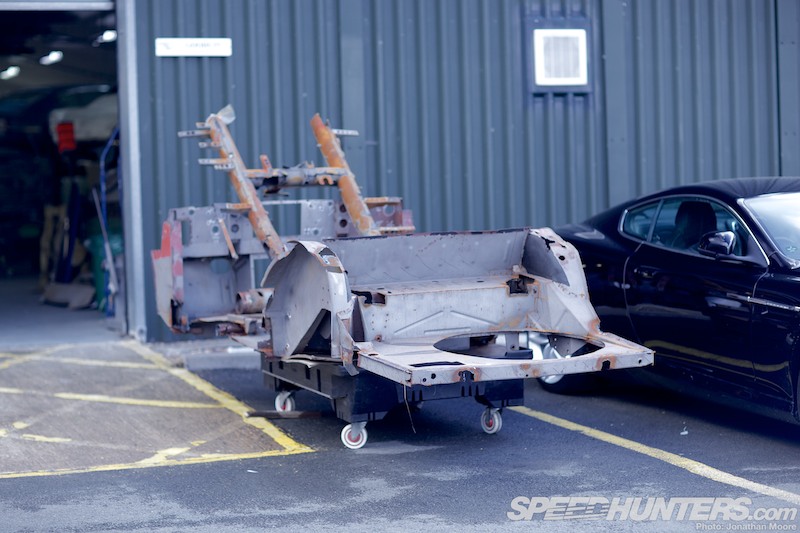
Though sometimes the starting point can be a whole lot worse…

Equally important as the metal underneath is the paint on top. You quickly understand that everything at Works is on such a different scale: not the number of cars they have to deal with in the context of quantity through the door, more the sheer number of possible cars they might have to deal with. Red is not Red is not Red for instance: it will all depend on the year of manufacturer and conditions the car has been exposed to.
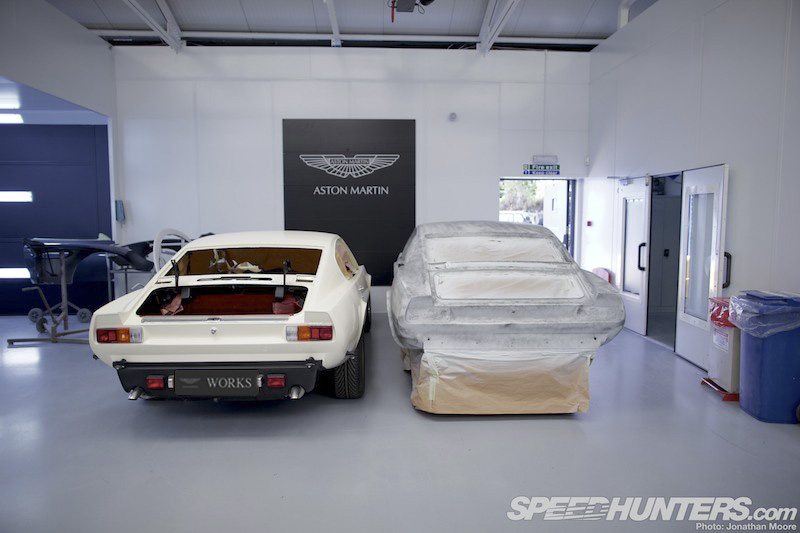
Existing colours are measured using a spectrophotometer and the formula mixed by weight with tinters that can cost a thousand pounds a pot. But before the many hours of painting come even more hours of preparation. Primers are followed by multiple guide coats, each time rubbed down to provide the perfect surface for the final finish.
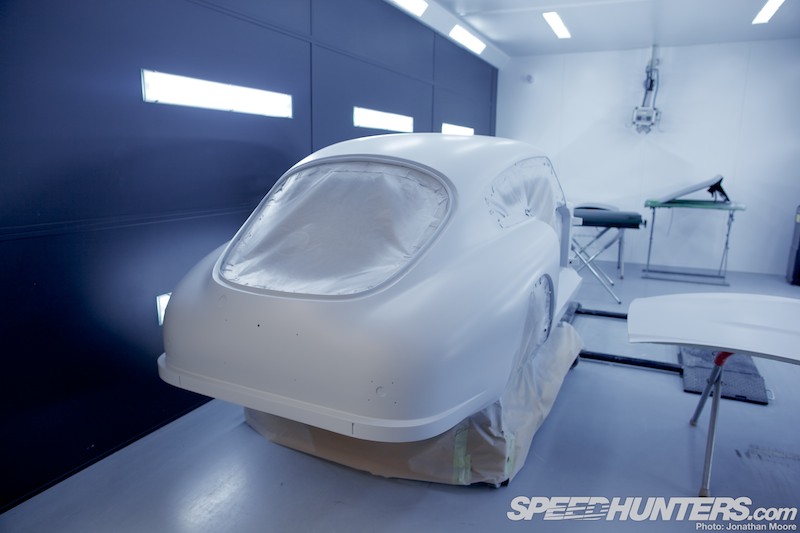
Once again, it’s the combination of what’s on the go at any one time that’s impressive: in one of the bays was a DB2/4 which had just had its second coat of primer, next to a Vanquish bonnet, DB6 doors and boot lid and V8 sills!
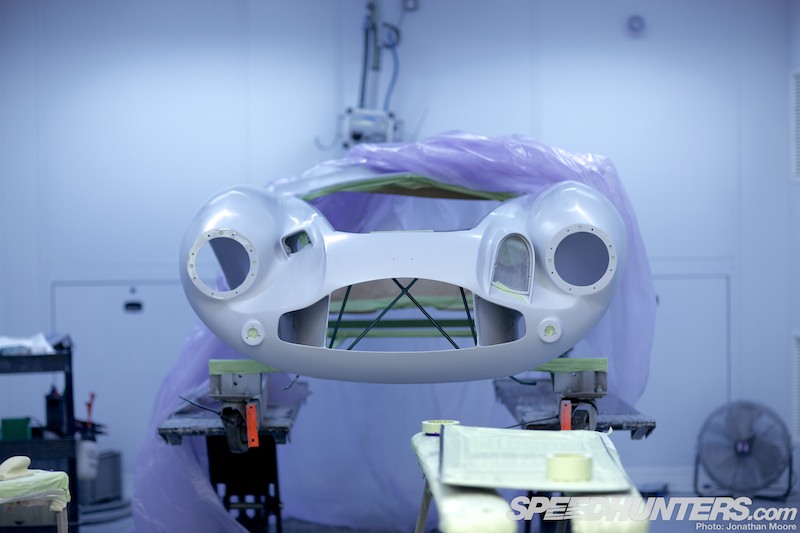
The DB3S kept cropping up: the body was being masked off in another bay, all of which are oversized and ventilated to reduce dust contamination; ramps raise panels up to further keep dust at bay.

Creating classic colours is challenge enough, but the modern metallic or pearlescent paint finishes on cars like the Vanquish can be even more of a headache to match…
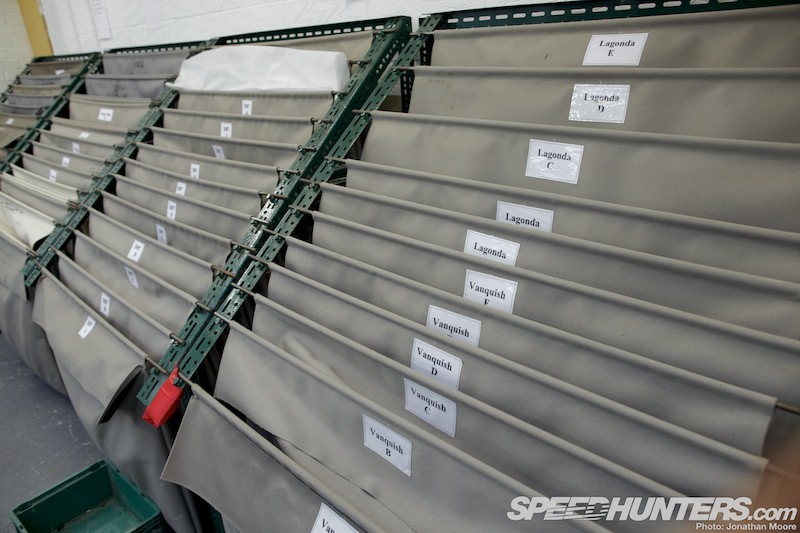
The modesty of the building that houses the adjacent trim shop belies what happens inside. Working from templates that stretch all the way back to the earliest of David Brown cars where possible (and from re-engineering originals where not), the elite team of three – with almost 90 years experience between them – are yet more Aston lifers.
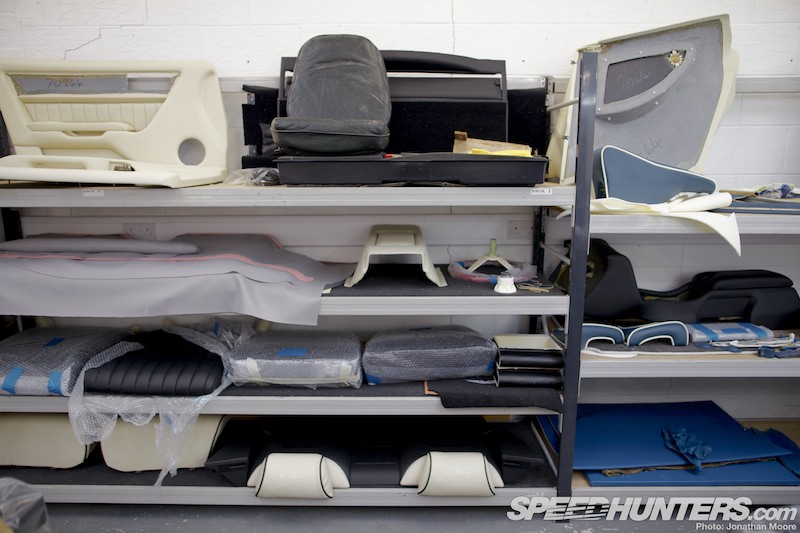
The priority was the Goodwood DB2, but four other interiors were in progress of 10 cars in total that were then in for restoration by Works. The soft leather of a DB9 provided a real counterpoint to the tiny original racing seat from the DB3S. In case you think these guys are tucked away working on old stuff all the time, think again. The trio created the interior for the recent Bertone Jet 2+2 Shooting Brake one-off seen at the Geneva Motor Show and the One-77 hypercar. And any replacement trim needed for the modern range. So, again, everything.
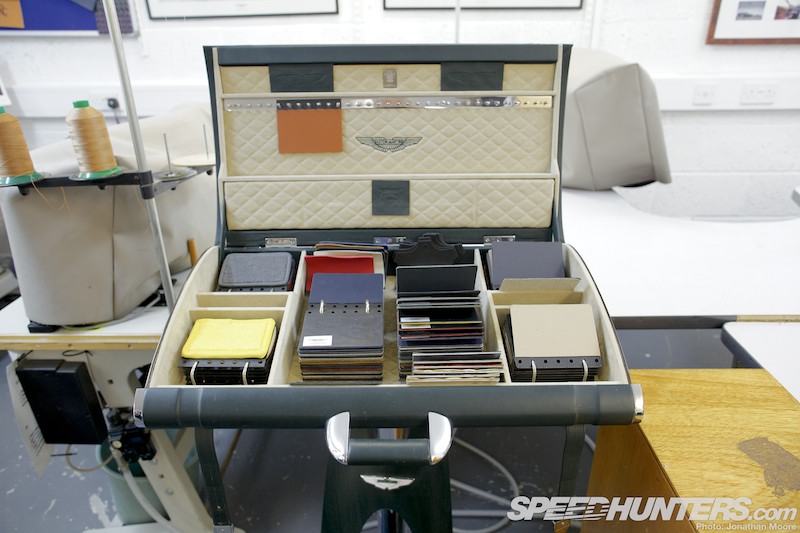
I was bowled over by this: an original Aston Martin salesman’s suitcase, containing all the trim options for the DB-era range, finished exquisitely by the trim team of the time.
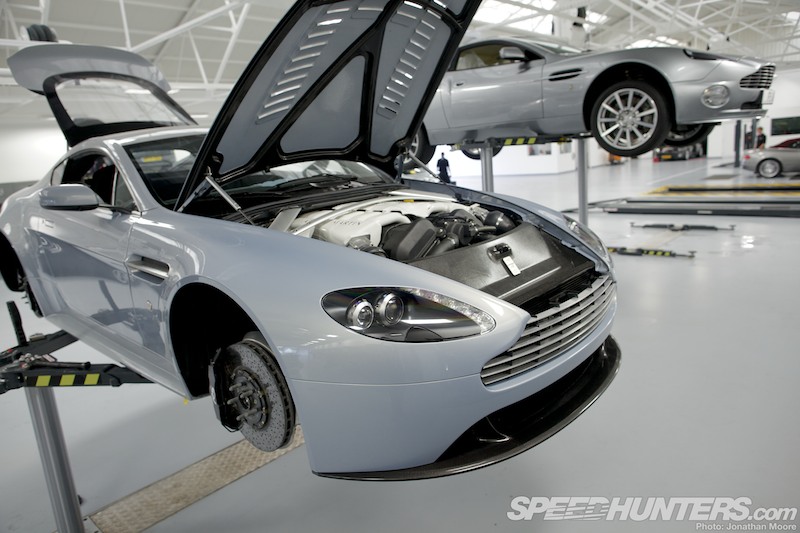
Next to the extraordinary work of the Heritage team, you might be tempted to think that the modern servicing department might seem a bit stale. But they not only deal with the modern beauties but have also been responsible for some interesting race-to-road conversions, look after a number of One-77 hypercars, oversee track days and provide a ‘Flying Spanners’ service to take care of customers in countries without local dealer partners.
It’s probably the only place in the world that would actually make you want your car to go wrong…
So with this look into where the last century of Aston Martin’s achievements are restored to their former glory, this concludes our mini-theme on the marque. Happy Anniversary Aston Martin!
Jonathan Moore
Instagram: speedhunters_jonathan
jonathan@speedhunters.com
Aston Martin theme on Speedhunters
More Aston Martin stories on Speedhunters





